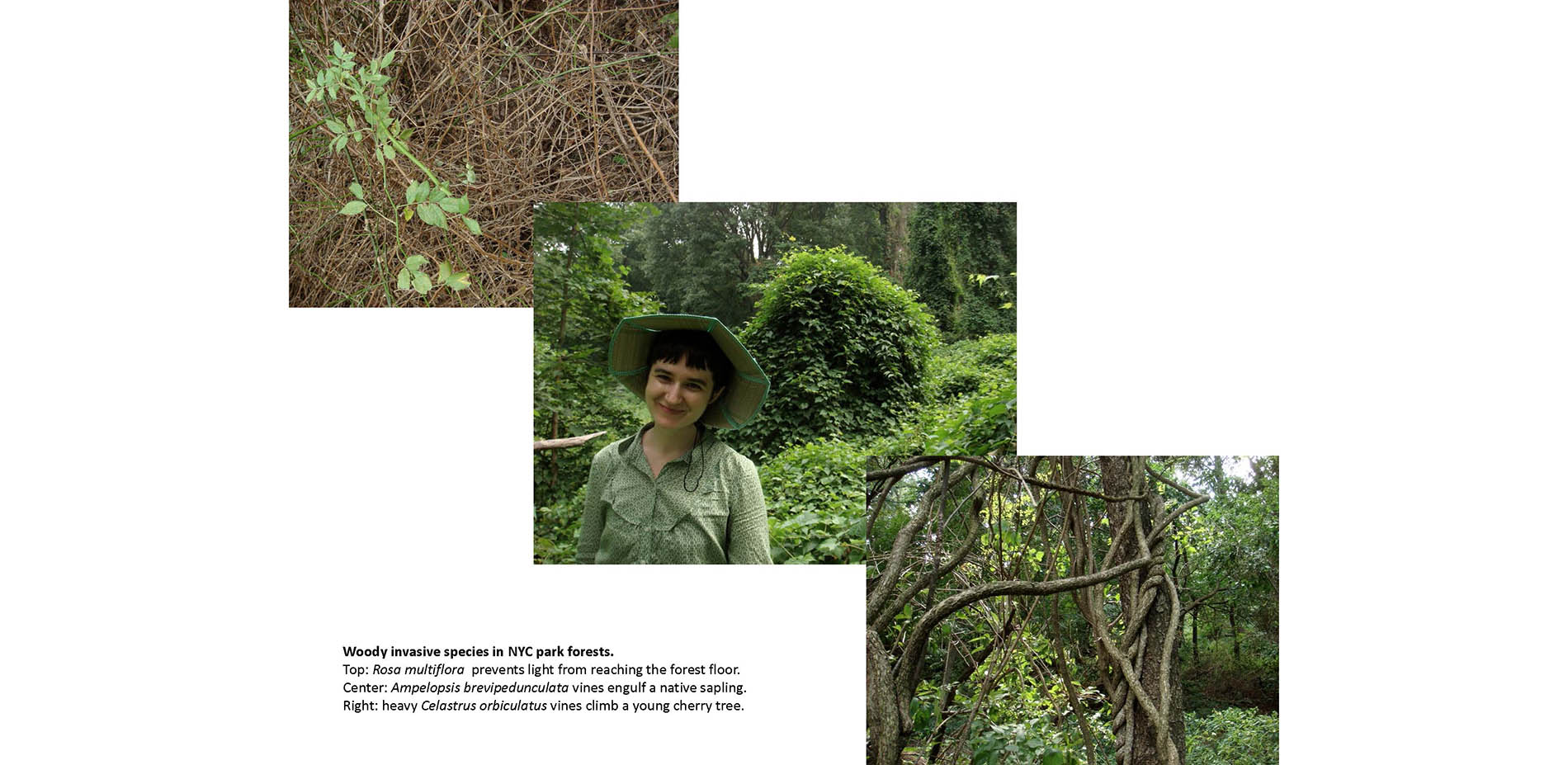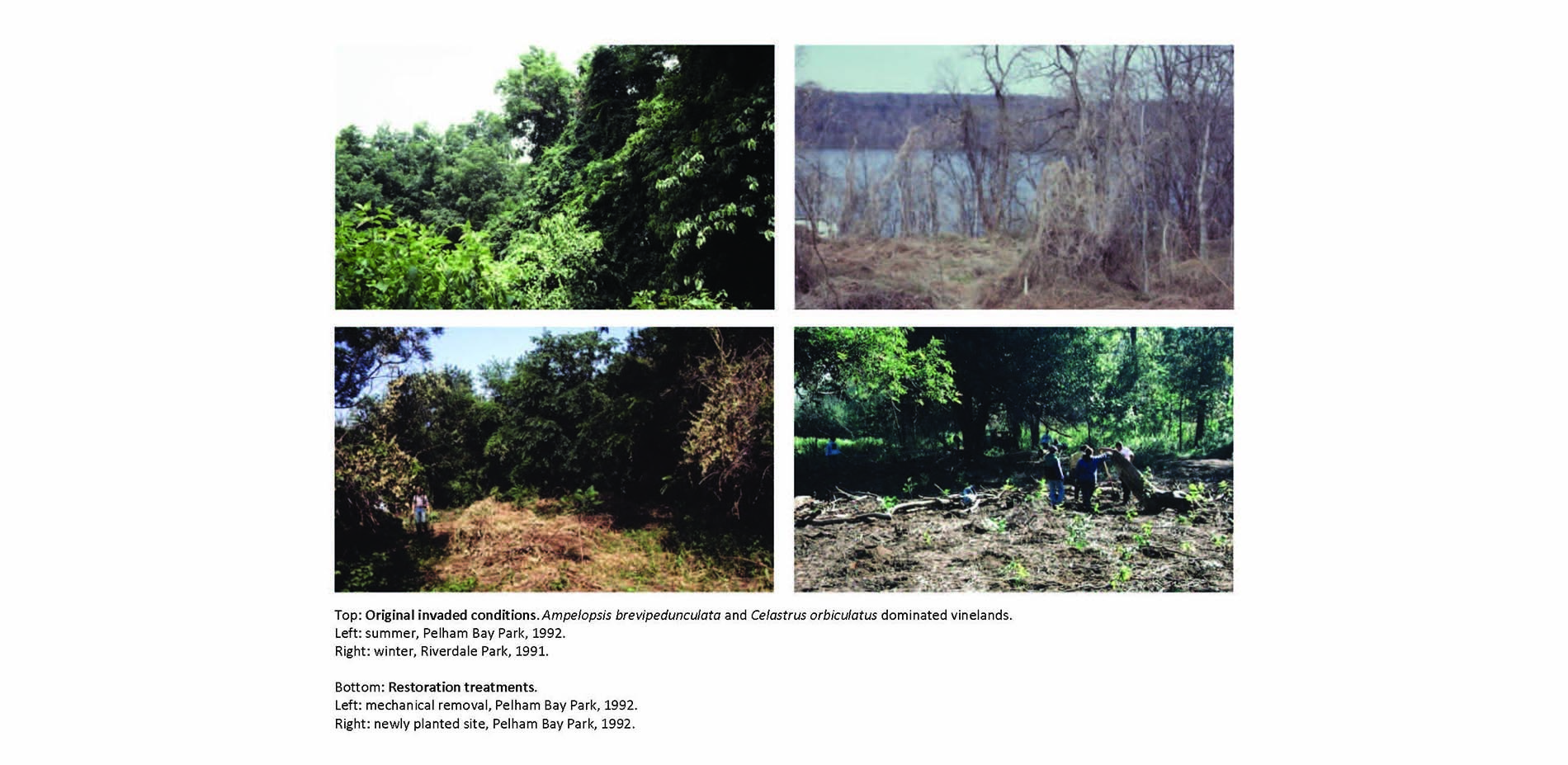PROJECT NARRATIVE
Problem
More than half of all human beings now live in cities, and both global urban populations and urban land cover are increasing rapidly. Landscape architects are increasingly asked to design for ecological function and biodiversity to increase urban ecological services. At the same time, urban environmental stresses impact the long-term fate of landscape architectural designs for ecosystem patterns and processes, reducing the ability of urban ecosystems to provide necessary conditions for biodiversity and human wellbeing.
In this context, fragments of habitat in urban parks become disproportionately important to the role of landscape architects in supplying local biodiversity, habitat, pollutant filtration, urban heat island amelioration, and the physical and mental well-being of urban residents. Improving the ability of landscape designs and management to provide ecological benefits is increasingly critical.
Municipalities are turning to ecological restoration of urban forests to provide essential ecosystem services, with strategies including restoration and regeneration of habitat patches in the urban matrix. These habitat fragments may be in historic protected parks with relatively intact original soils, or in places with many other previous land uses. These land uses introduce many new species, and cities and contain high proportions of invasive plants that reduce diversity and alter ecosystem functions. What management techniques can parry this type of degradation?
To understand the long-term outcomes of ecological restoration methods used to improve landscape management and design practices, and to improve the environmental health of cities, we tested one of the largest and longest-running urban park forest restoration projects in the United States against unrestored control areas.
Comparison with Past Research
Both landscape architects and ecologists have begun to focus on enhancing important environmental benefits in cities. However, many efforts toward ecological restoration envision their goals in terms of a pristine reference site. This approach dooms urban efforts to failure, as urban environments are much changed from pre-settlement conditions. In the urban environment, a more dynamic, multi-dimensional approach is needed – one that takes into account the spatial heterogeneity of the urban matrix, changed disturbance patterns, and interactions between the social and the ecological. These are fundamental concerns for public park designers and managers. This multi-year study specifically addresses urban conditions and biotic threats, and urban management efforts toward sustainability.
Relationships Investigated
This research tested the fate of forests that were the focus of early efforts by the New York City Parks Natural Resources Group to improve the health of forests in parks using new ecological restoration protocols. NRG has been engaged in ecological restoration of urban forest fragments since its formation in 1984, when initial mapping found extensive patches in park forests that were dominated by a few woody invasive vines and shrubs.
After almost twenty years of woodland growth and development, we returned to the sites where restoration efforts were attempted and asked, did the investment and methods work, compared to similarly degraded urban forests where no action was taken? Can this restoration approach successfully be applied to other historic urban parks being degraded by waves of invasive species?
Methods of Inquiry
We tested whether native and designed forest structure, and composition and trajectories of plant community change, can be restored in urban forests by removing woody invasive species and planting native trees. We assessed current ecological conditions in thirty 20m x 20m plots in restored areas, as expressed in their plant communities 15-20 years after first treatment. We uncovered and codified the sites and methods used by Parks Department professionals at the beginning of their work, 15-20 years before our analyses, then spent two years in the field with crews sampling vegetation structure and composition across all sites. We compared restored forests with thirty other equal sized New York City Park forest plots that were also invaded by these woody plants, but were not restored. The data sets include identification and measurement of over 8,000 woody stems and over 20,000 individual herbaceous plants of more than 200 species.
To test whether management intensity and effects of urbanization affect outcomes in these park environments, we also compared plant community data to 40 site characteristic variables, to field-collected soil samples and recent New York City soil maps that identify natural and human-deposited parent materials, and to a 20-year database of restoration management activity. Although the management database did not include specific treatments for all locations, we were able to determine level of management effort based on how many times work was done in each restoration area. This information is needed to refine management protocols for landscape professionals.
We hypothesized that successful restoration would result in differences in community composition and structure between restored and unrestored sites. If removal of invasives and planting of preferred native species were successful in maintained the design intent, there would be a reduction in targeted invasive species, a higher proportion of native tree species, a more complex physical forest structure, and more naturally-regenerating seedlings and saplings of native woody species in restored sites compared to sites that were invaded but not restored. These differences would indicate success of the landscape management approach. This would justify the restoration protocol design and investment.
Results and their Importance
Results supported the hypothesis that removing invasive woody vines and shrubs followed by planting native trees did significantly change the trajectories of restored urban forests. Significantly lower invasive species abundance, more complex vertical forest structure, and greater native tree recruitment 15-20 years after restoration began indicated that invasive species removal followed by planting resulted in divergent trajectories in plant communities – and achievement of the central goals of the restoration.
Invaded sites that were not restored had an average of only 29% ground layer cover by native plants, while restored sites had 61% native cover. Restored sites had significantly more total trees, native trees and native tree saplings per plot. Targeted invasive species covered an average of 50% of the ground in unrestored sites, but only 7% in restored sites.
Additional important findings are that all sites were impacted by anthropogenic factors known to reduce plant growth, change distributions of soil biota, and alter nutrient cycles. We found that regenerating species indicate novel future assemblages, including many introduced species and native plants that are adapted to disturbed habitats.
Treatment records revealed that restored sites varied greatly in the amount of maintenance done after the initial invasive removal and tree planting, and we found that restored sites also varied in degree of reinvasion. The degree to which forests were reinvaded was associated with how often sites were revisited after management treatments were begun. Despite these differences, however, persistent positive effects of management were found even in sites that had little to no maintenance following the initial restoration.
Applicability to Landscape Architecture Practice
The results of this research show that ecological restoration decisions by landscape architects in their initial designs and management plans to remove and then retard noxious non-native species can have significant positive, long-term value for urban parks. After almost two decades, treated areas are in healthier condition than non-treated areas (as measured by several biodiversity indices). The results show the importance of site history and long-term processes, and the important effects of the urban environment on soils, species pools and disturbance patterns. These landscape methods can now be considered as a basis for new protocols for landscape architects to maintain valuable landscape structure and function in the face of persistence urban biotic threats. Degradation of our historic urban parks can indeed be reversed by improved landscape management protocols, informed by ecological theory and tested and supported by field experiments.


















